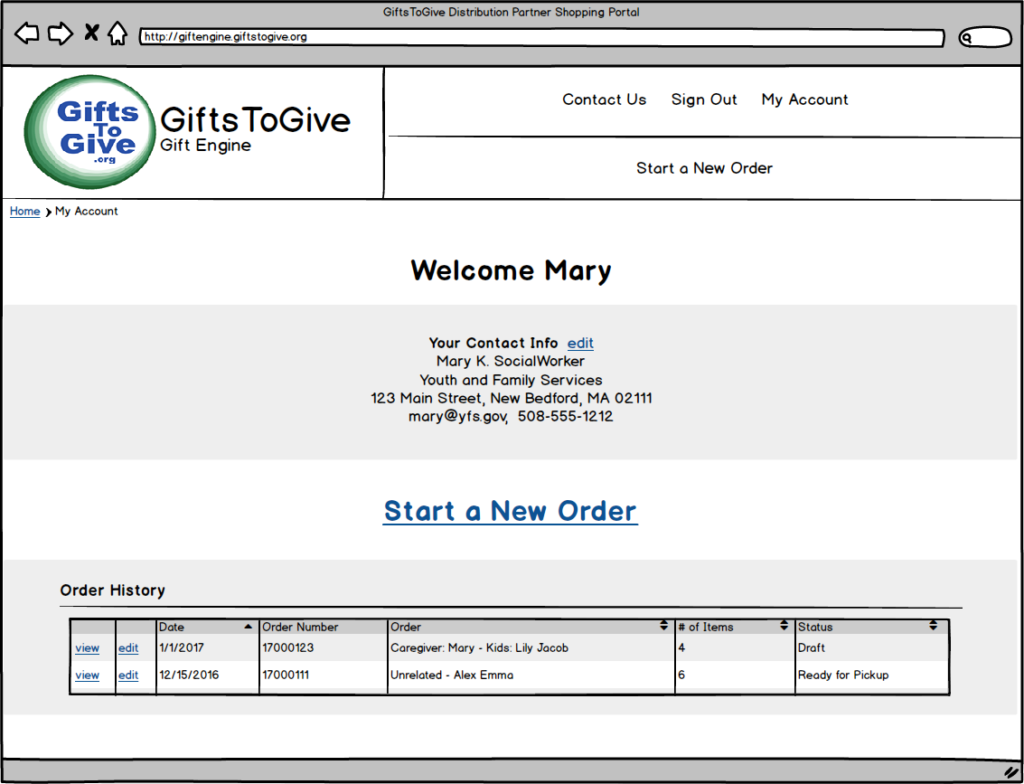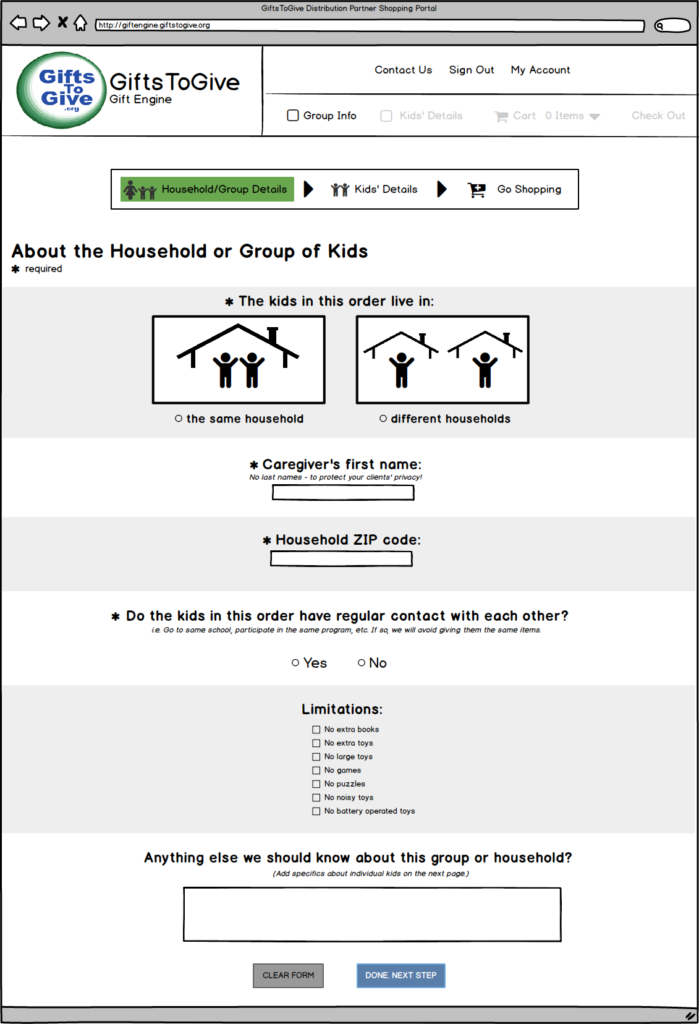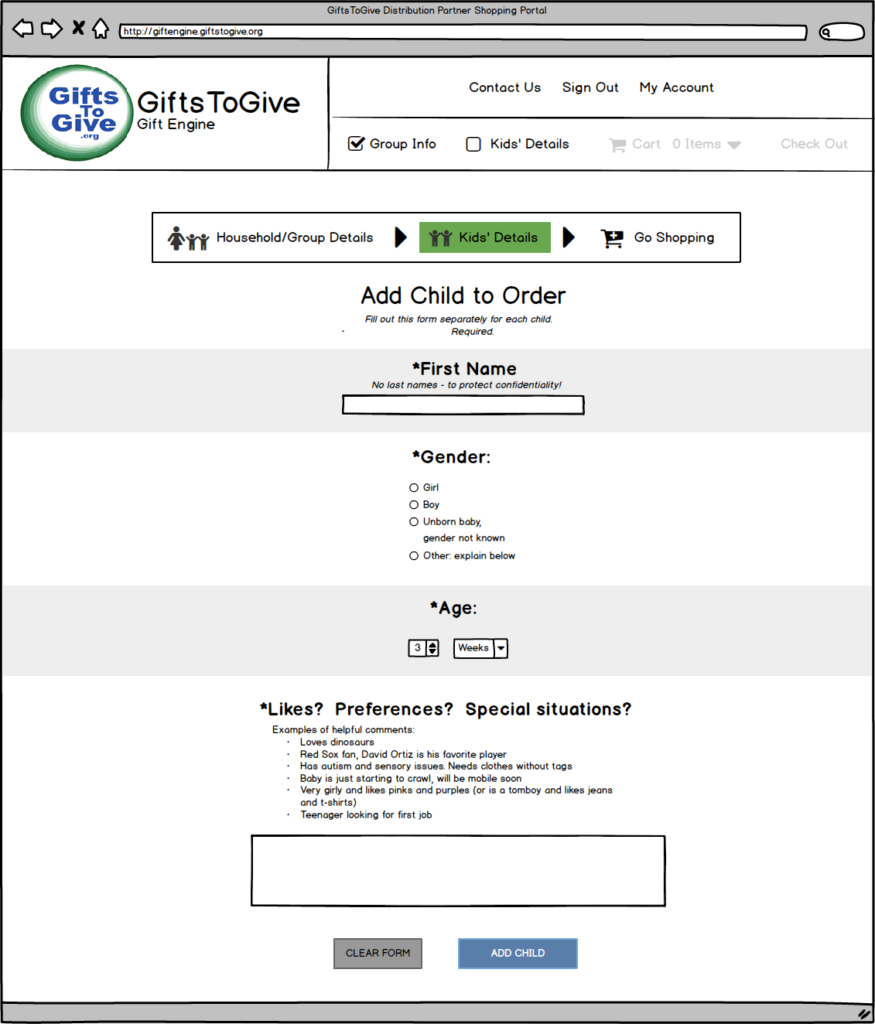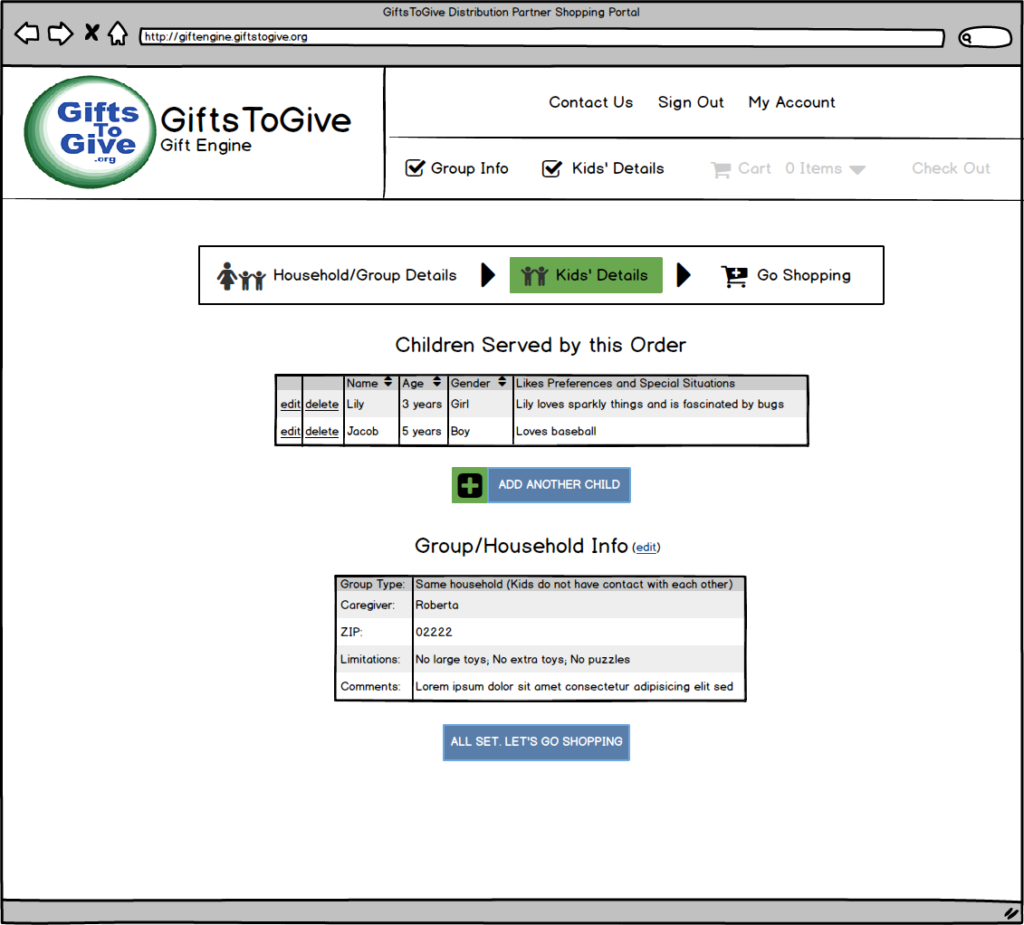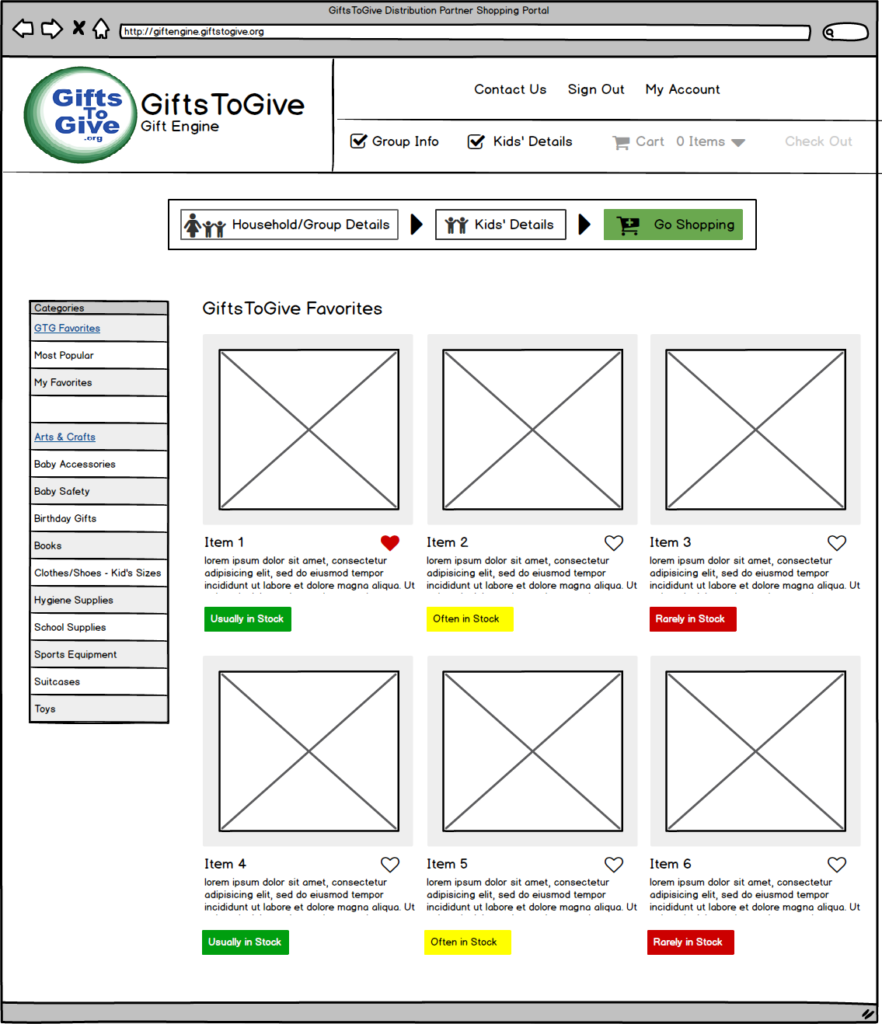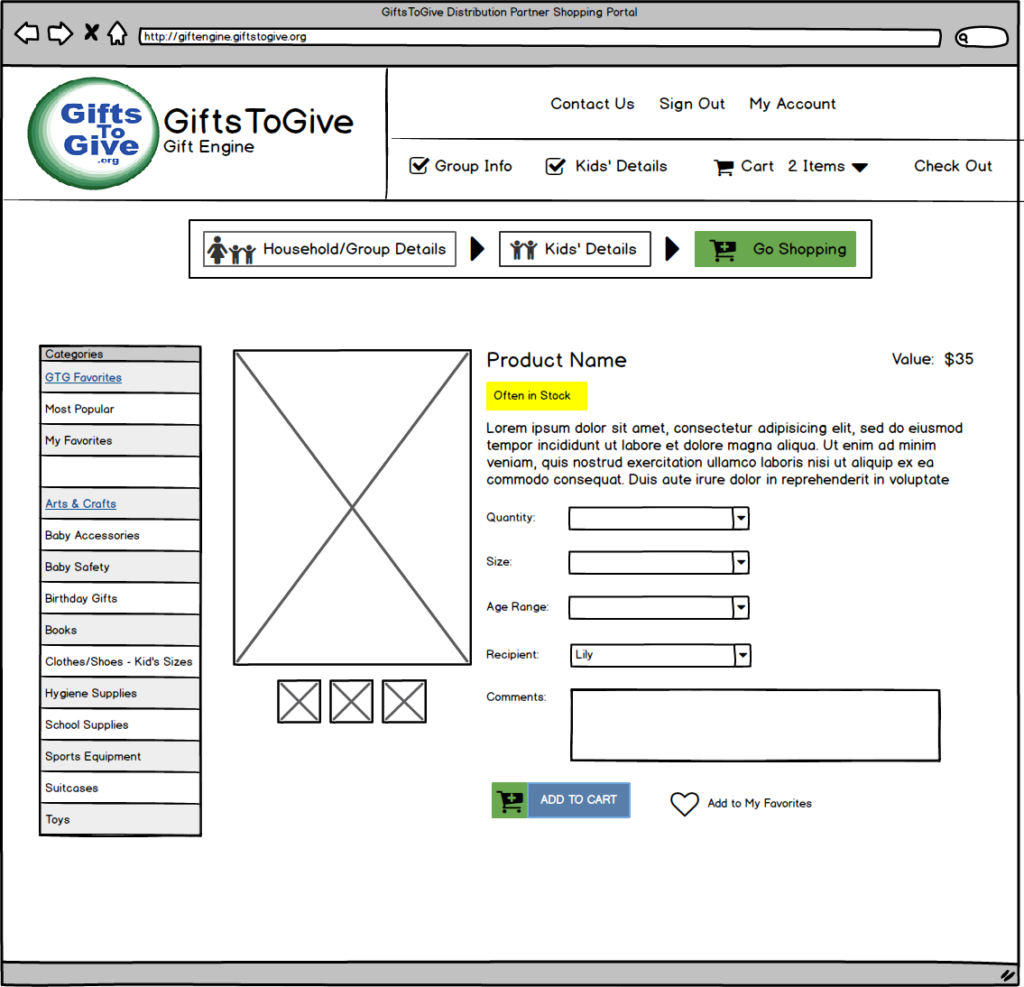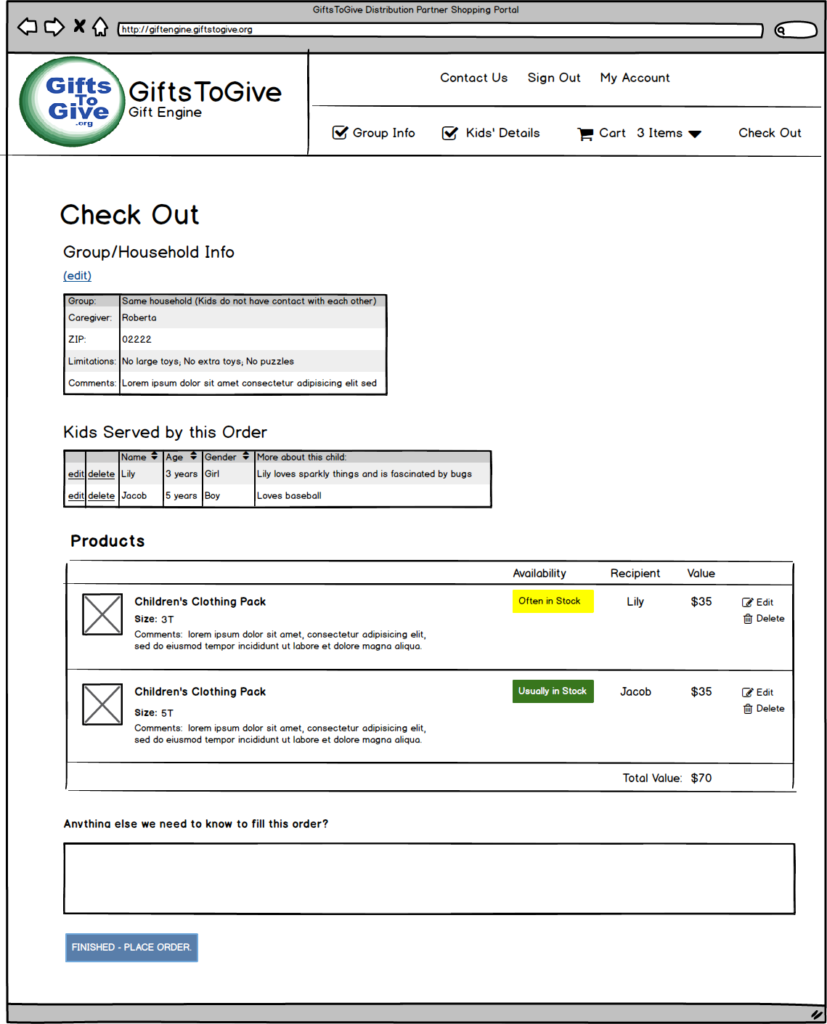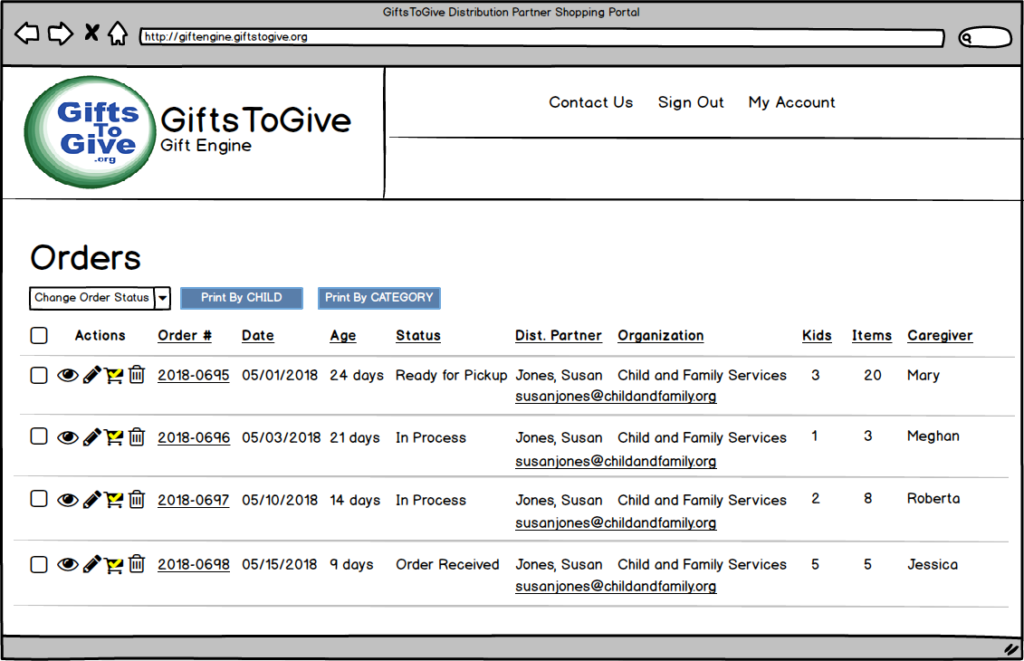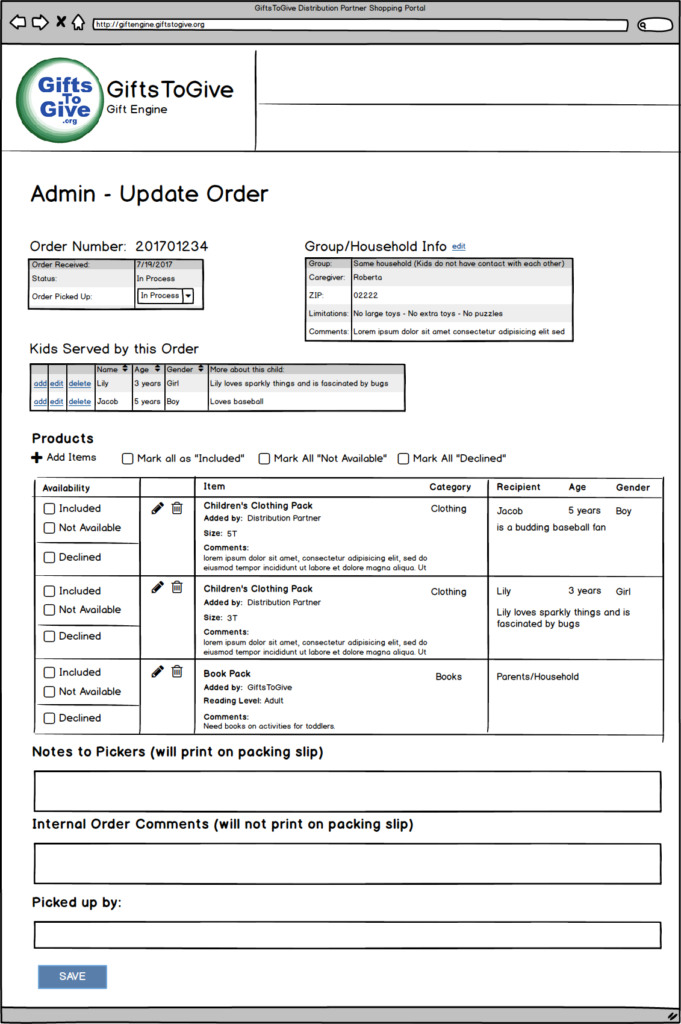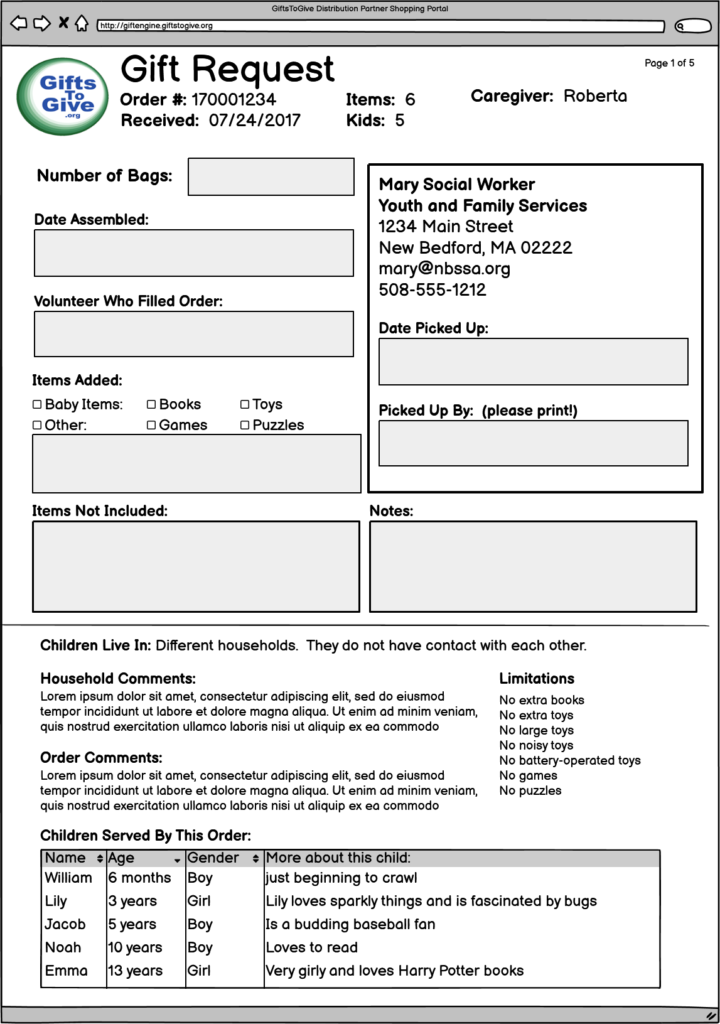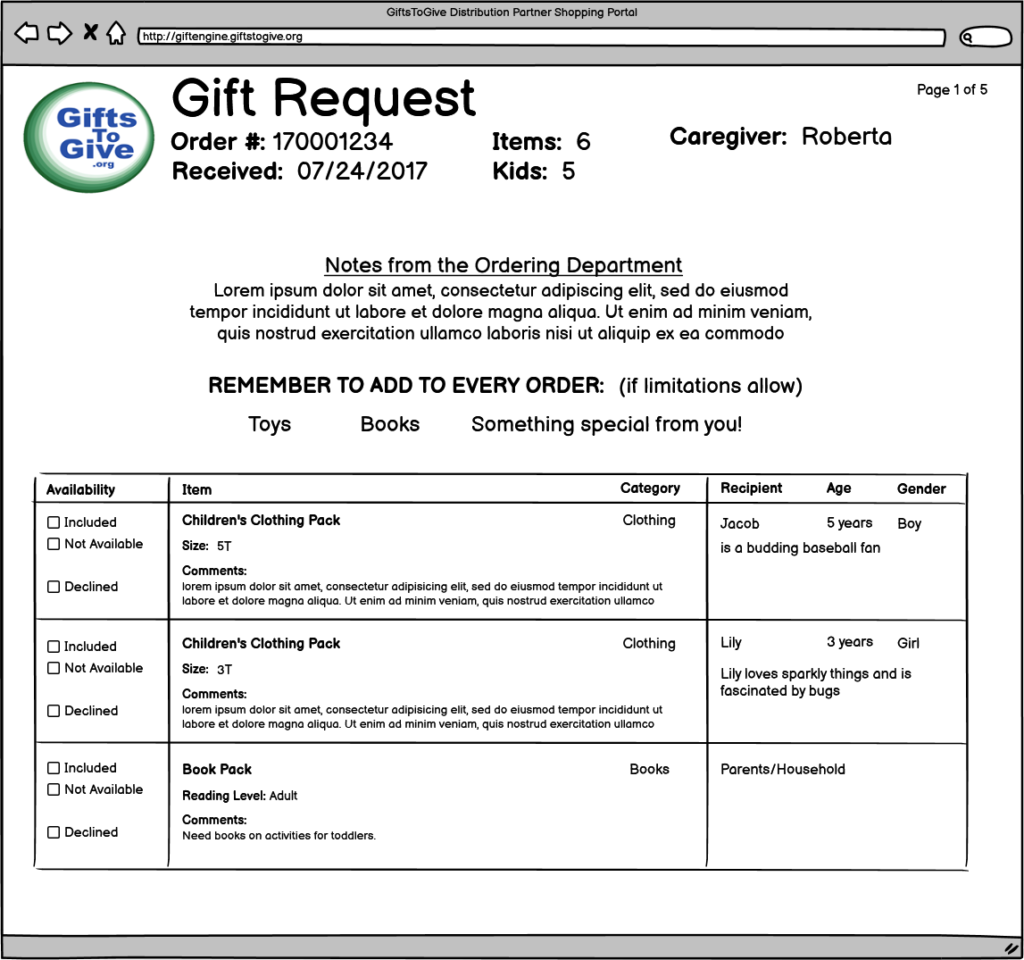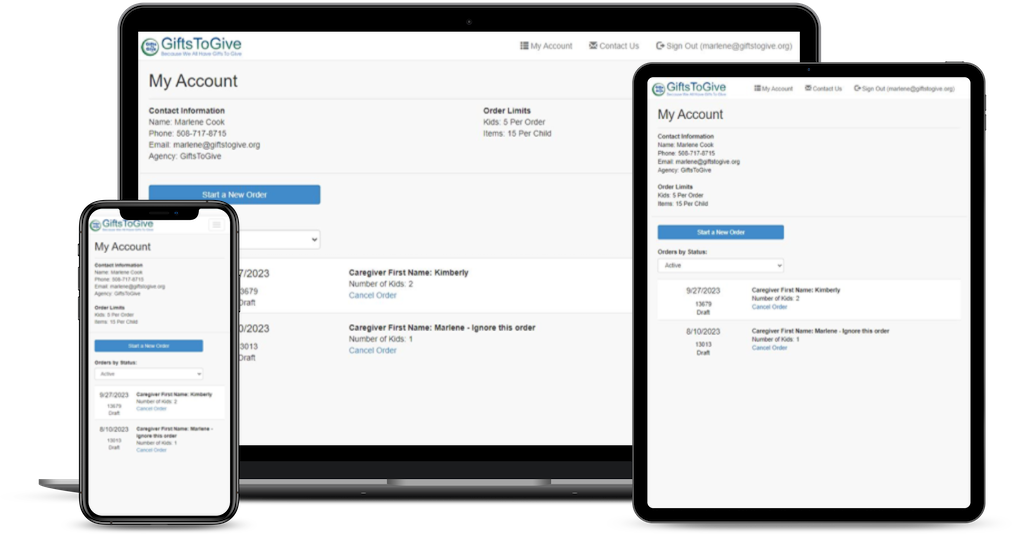
Order Management System for a Children's Charity
- Business Analyst
- UX Researcher
- Project Manager
Client
G2G collects gently-used clothes, books, and toys from local families. Through a network of 500+ social workers, they connect these donations with children in need. Social workers place online orders, and volunteers customize each order to meet the unique needs, interests and preferences of the kids they serve.
Design Problem
Team
- Gifts To Give CEO
- Technical Project Manager/CRM Expert
- Technology Consultant/Programmer
User Groups
- Kids that need the essentials of childhood (clothes, books, toys, baby gear, etc.)
- Social workers that work with kids and place orders on their behalf
- Volunteers that fill orders
- CEO that needs to manage whole system
User Groups

Social Workers
- Very devoted to serving kids and families
- Very appreciative of G2G’s services and see it as a key piece of their work.
- Hesitant to criticize a service they see as a gift.
- Are rarely in their offices and frequently visit with families in their homes or at schools.

Kids & Families
- The most important audience!
- Even though they don’t place or fill orders themselves, the new software needed to help the grown-ups communicate better to provide kids with the things they need to succeed and feel valued.
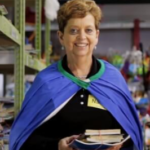
Order Fillers
- All volunteers
- Mostly retirees, age 65+.
- Most are “tech willing” but not “tech savvy” so the system needed to be straightforward and easy to navigate.
- Many had a hard time reading the existing packing slips in the low light of the warehouse.

CEO of G2G
- Devoted to serving as many kids as possible with exactly what they need to succeed and feel valued.
- Wants volunteers to have a great experience.
- Needs data from the order system to create reports.
- Needs to monitor the overall fulfilment process (# of orders in the queue, etc.)
User Research
Research Methods
- 1-on-1 with CEO
- Examination of old order data
- Group interview with order department volunteers
- Observation of order fulfillment process
- Focus group with social workers
Research Goals
- What works in the current system?
- What doesn’t work?
- How are folks working around the limitations?
- What does an ideal system need to do?
- How is the general process working for social workers? Are they getting appropriate stuff for their kids?
- Where do social workers create orders? In the office? In the field? At home? Laptops, phones, tablets?
Key Insights
- CEO manually downloads data, needs automated reports and dashboard visibility.
- Valuable recurring data in order comments highlighted key data points.
- The Order Fillers manually wrote packing slips, providing valuable insights for system improvement and a well-tested solution.
- Ecommerce packing slips lacked organization, handwritten versions had a cover page as well as separate pages for each child.
- Ecommerce system lacked fields to gather group-specific info on kids served. This was needed to avoid unintended outcomes such as giving an kids in the same classroom the same items.
- Social workers reluctant to provide feedback, worried about seeming ungrateful for the service, including extra items added to orders. Concerns included limited storage space for families in shelters and the potential that kids would have to give up a toy to receive an additional one.
- Few orders placed on mobile devices despite social workers’ home visits. Ecommerce system lacked mobile friendliness. Social workers’ desired solution: start orders on mobile with families, finalize later on another device.
Requirements
Kids & Families
Kids need to be kids and the need the stuff of childhood to do that. Their parents sometimes need some help providing those things.
Social Workers
Work on several orders at the same time. They frequently start an order while with a family and then finish it later in their office. They want to do this with several families at once.
Guidance on where to enter specific details. Data from the ecommerce software showed them adding details in random places because there was no other place to add it.
Space to tell GTG about what they couldn’t use. In some cases, large toys, noisy toys or extra toys are not practical – especially for families experiencing homelessness.
Order Fillers
Packing slips:
- Organized by Child > Department > Item with a page break between each child
- Puts details about household and living situation on each child’s packing slip so volunteers had access to them even if the order was filled by several people – each working on one child.
- Large print so that the retirees filling orders could read them in the low light of the warehouse
Backend:
- Track the status of each order
- Editing options: adding or deleting items as necessary
- User friendly and accessible
CEO of G2G
- See the status of all orders to gauge how much work needed to be done.
- A fulfilling volunteer experience. The new system should be easy to use and not get in the way of the work
Wireframes
Social Worker Front End
I structured the ordering process to flow from very broad info about the kids as a group to specifics about the kids before proceeding to selecting items. The process ended with a checkout that allowed the social workers to edit their selections and included space for miscellaneous info before finalizing.
- Group info: are they one family? Limitations on items? Other relevant info?
- Kids as individuals: age, gender and personal preferences.
- E-commerce “store”: When ordering items, they specify which child the item is for by selecting their name from a dynamically populated dropdown containing the kids names from the previous step.
- Order Summary/Checkout
Order Department Back End
Product Management
Key Requirements Identified
The research highlighted several key features that are not common in ecommerce software, but the new system would need to have:
- “Dynamically populated fields” – specifically the ability to add the list of kids served and have the names appear as an option when selecting items
- Collecting general information in addition to the store items
- Custom formatted output that allows them to combine info about the kids with the items selected
Off-the-Shelf Software Search
With the user journey and requirements nailed down, I searched for off-the-shelf software and concluded that custom development was necessary.
- E-commerce platforms: no feature that allowed kids names to populate a field on items in the store.
- Open-source e-commerce software: Turning off shipping and payment features in many of these required extensive programming.
- Order processing software designed for internal use within an organization: Very expensive and did not allow for the dynamically populated kids field.
Custom Development with Consultant
After putting out a request for proposals to several companies, we hired a firm that used combination of custom development and Microsoft Dynamics to manage the entire process.
- Social worker front end: Custom-built a on Azure. User access was managed through Active Directory with the social workers having “guest” access.
- Order processing back-end: Managed through Microsoft Dynamics’ existing order management features. Dynamics’ classic CRM features allowed for better tracking of emails and phone calls with the social workers and mass emails to them as a group.
- Future uses of Dynamics: The client was delighted that Dynamics could also be used to manage volunteer and donor data down the line, bringing their ultimate dream of uniting all data on one platform within reach.
- Nonprofit Friendly Pricing: The client was happy to find that Microsoft has a generous donation program for small nonprofits like them. After development, the cost Azure hosting and Dynamics licenses was less than $100 per year.
Adapting the Order Processing Workflow
I worked with the Order Department to update and adapt their workflow to this process. Dynamics offered some new features:
- More granular order statutes: Instead of just tracking orders as “received” or “filled,” they expanded the list to:
- Order Received: submitted but not reviewed
- In Process: reviewed, printed and in queue to be filled
- Ready for pickup:
- Ready for pickup: 14 days overdue
- Ready for pickup: 30 days overdue
- Cancelled by GtG
- Cancelled by Social Worker
- Automated emails: Emails are generated and sent through automated processes – either a change of status or time lapsed from the last status
- Dashboard: a bar graph on the homepage showed the number of orders in each status, allowing the CEO and Order Department to identify bottlenecks
User Testing
Along with the consultant, I conducted user testing with social workers and the internal folks. As expected, the testing uncovered some necessary tweaks to both sides of the process, but nothing major.
Rollout
The final product was rolled out gradually to groups of social workers over the course of several weeks. This allowed the Order Department to master Dynamics while closing out orders in the old system.
The product is currently in use and reviews from internal and external users have been very positive.
Demo of Final Product
My Takeaways & Reflections
Every project is a learning experience. My biggest takeaways were:
Users have a lot to say that’s outside of your agenda and it’s worth recording.
In this case, social workers provided vital, initially unspoken feedback to GtG. GtG was unaware of the details and the underlying dynamics. Incorporating these specifics into the software led to improved communication channels between GtG and the social workers.
Workarounds are a treasure trove of design requirements.
Watching the order department and social workers work around the existing system revealed crucial data points for designing an ideal process.
Getting knee deep in the process uncovers pain-points that users might not mention.
Collaborating with the order department while fulfilling orders gave me firsthand insight into the process, focusing on enhancing efficiency. Once we adopted the CRM platform for order management, I identified system features that could address process pain-points and areas for potential improvement that were previously unrecognized.
Sometimes end users can’t be directly involved in the design process.
In this case, it would have been inappropriate to interview the ultimate end user – the kids who benefit from GtG’s services. Instead, we prioritized empathy and gained insight into their world through interactions with the adults in their environment, including GtG staff and social workers.







